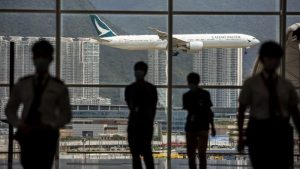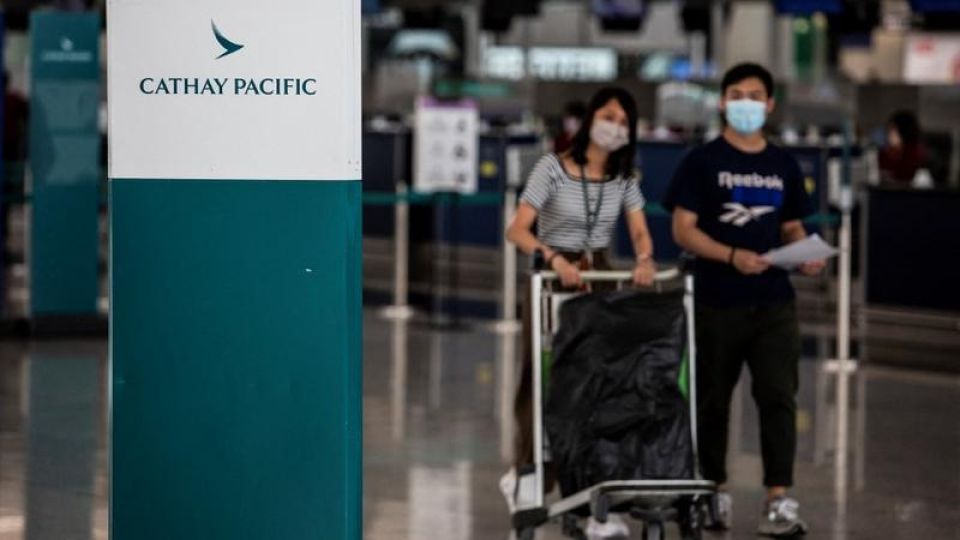January 25, 2022
HONG KONG – Cathay Pacific Airways has forecast an annual loss of between HK$5.6 billion ($719.2 million) and HK$6.1 billion for 2021 due to continuing coronavirus-related challenges.
But the airline, bailed out by the Hong Kong Special Administrative Region government in 2020, said Monday that the negative financial performance “compares favorably” with the HK$21.6 billion loss in 2020. In the first half of 2021, the Cathay group booked a HK$7.56 billion loss.
On Monday, Cathay Pacific said in a filing to the Stock Exchange of Hong Kong, the full year 2021 loss had narrowed as a result of strong cargo demand, high cargo yield and load factors, together with effective cash and cost management
In June 2020, the HKSAR govt infused HK$39 billion in new capital into the airline, under which Cathay Pacific issued HK$19.5 billion in preference shares with detachable warrants to the government.
At the time, the carrier was losing HK$2.5 billion to HK$3 billion a month. Late that year, the company shed 8,500 jobs and shut down Cathay Dragon. In 2020, Cathay Pacific received HK$886 million public cash under the Employment Support Scheme.
On Monday, Cathay Pacific said in a filing to the Stock Exchange of Hong Kong, the full year 2021 loss had narrowed as a result of strong cargo demand, high cargo yield and load factors, together with effective cash and cost management.
Also, the full-year 2020 result included the recognition of one-off items such as impairment charges and restructuring, which were significantly reduced in 2021.
Group financial results are due in March. Swire Pacific Limited holds 45 percent of ordinary shares in Cathay Pacific.
Cathay Pacific CEO Augustus Tang Kin-wing said operating cash burn has been reduced from the HK$2.5 billion to HK$3 billion range “in the first half of 2020 down to marginally cash generative in the second half of 2021.”
He regretted that capacity reduction in late December 2021 and early January 2022 will mean operating cash burn will be HK$1 billion to HK$1.5 billion a month from February. Cargo and passenger flights were canceled end December.

A Cathay Pacific aircraft comes in to land at Hong Kong International Airport on Aug 11, 2021. (ISAAC LAWRENCE / AFP)
Cathay Pacific CEO Augustus Tang Kin-wing regretted that capacity reduction in late December 2021 and early January 2022 will mean operating cash burn will be HK$1 billion to HK$1.5 billion a month from February. Cargo and passenger flights were canceled end December
Tang said Cathay Pacific flew a mere 717,059 passengers in the past year, compared with 4.6 million in 2020 and 35.2 million in 2019.
He said the airline carried 1.3 million tons of cargo in 2021, compared with about 1.3 million tons in 2020 and 2 million tons in 2019.
“We deployed all available capacity to meet the consistently high demand, achieving strong yield and high load factors and transporting a wide range of goods including daily necessities, fresh produce, electrical items, and pharmaceutical products.”
Tang said the airline also surpassed the milestone of 120 million COVID-19 vaccines carried in 2021, airlifting more than 13.3 million doses a day.
“As a group, our airlines have carried more than 165 million doses of different COVID-19 vaccines around the world since the pandemic began.
In December, Cathay Pacific flew 92,219 passengers, up 130.6 percent from the year before, but a 96.9 percent drop compared with the pre-pandemic level in December 2019.
The month’s revenue passenger kilometers grew by 156.5 percent year-on-year, but was down by 95.1 percent against December 2019.
Passenger load factor increased by 18.2 percentage points to 36.6 percent, while capacity, measured in available seat kilometers, increased by 28.6 percent, but remained 88.6 percent down on December 2019 levels.
For all of 2021, passenger numbers dropped by 84.5 percent against a 61.8 percent fall in capacity and a 79.5 percent decline in RPKs, compared with 2020, the airline reported.


